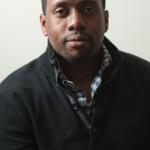
By José Luis Vilson, MƒA Master Teacher
At the recent MƒA Fall Function, Mayor Bill de Blasio gave a speech to the MƒA community of almost 1,500 NYC mathematics and science educators. Mayor de Blasio used his keynote opportunity to extol the virtues of Math for America as an advocate for education. In the speech, he treaded lightly when discussing his much-hyped meeting with President-elect Donald Trump, but emphasized the importance of good educators in our classrooms (note bene: de Blasio shouted out two MƒA educators who taught his own children in high school). The Mayor galvanized the audience on some issues closest to the hearts and minds of the New Yorkers in the audience.
The most poignant part of his talk was the presentation of his Excellence and Equity plan. In this plan, he points to three of NYC Department of Education initiatives that could help New York City public school students make significant strides:
- Computer Science for All
- Advanced Placement classes in all high schools
- Algebra for All by 9th grade
As he spoke about each program, the reception went from joyous laughter to resounding applause. It demonstrated how this is the perfect audience for these types of announcements – our policymakers should always work through our best and brightest educators, many of whom were in attendance that night.
You can read more about the platform here, but one of the key levers for these new initiatives is Math for America’s fellowships. Unlike many progressive education groups that work from a deficit model, Math for America instead seeks to support and retain the best and brightest STEM educators in the city. Their criteria for induction (knowledge of content, knowledge of pedagogy, knowledge of students) grounds the conversation between MƒA teachers on solid foundation of professionalism and solutions thinking. Because the structures already lend themselves to creativity and leadership among us, teachers in MƒA could have more voice in the direction of policy with respect to STEM education in New York City.
At the same time, we must recognize the challenges of doing this work from an equity framework. Our best and brightest are working in both elite schools and “low-achieving” schools as well. The latter usually have a majority black and brown student population, and that’s worth acknowledging. We should get beyond conversations of closing the achievement gap and, instead, focus on closing the opportunity gap. These reforms point directly to this gap, and STEM teachers have been a long-neglected part of this equation.
This especially applies to the Algebra for All goal, an item near and dear to my heart and mind. I came into the teaching profession as a middle school math teacher, and stayed in this position because I found a way to affect change. As an eighth-grade math teacher, my focus is less on making sure students can pass standardized tests, but to imbue them with the skills to question, analyze, and persevere through problems in spite and because of freshman year of high school. People who study this link in depth will attest to algebra as a gateway course for high school graduation.
Some, including political scientist Andrew Hacker, have suggested getting rid of algebra altogether. But my main disagreement is always around the issue of equity and whether my students of color would have the same doors open to them if they didn’t have some foundation in algebra. The work of STEM teachers is grounded in whether their students not only master the content in front of them, but have the tools to analyze problems we haven’t seen yet. The mayor was right to address the thousand-plus attendees at the MƒA Fall Function because we have a vehicle for advocacy: students, pedagogy, and content.
With Mayor Bill de Blasio’s foci laid out for us, we got the keys to the city.
